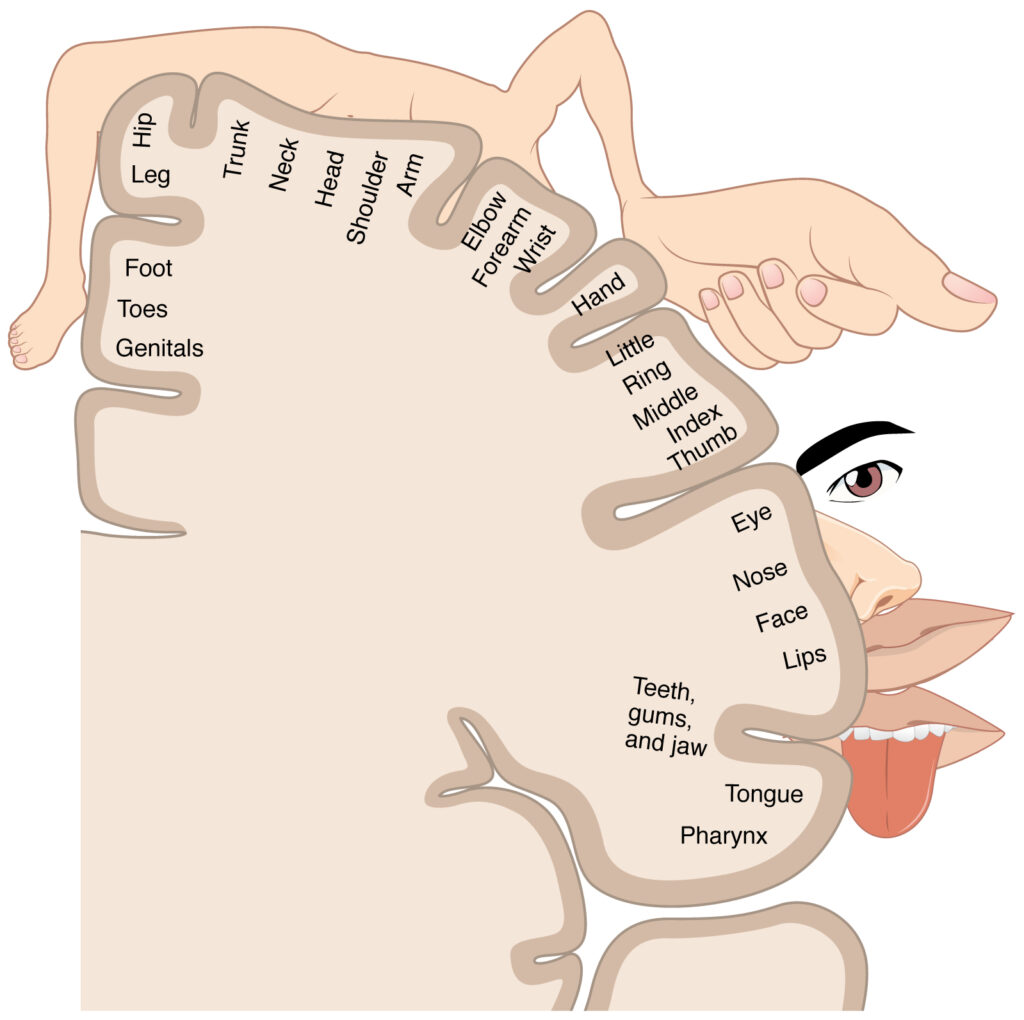A connection exists in the brain between the foot and the pelvic floor. We need to be aware of this for complete treatment of pelvic floor dysfunction. There are endless resources on the complex topic of neuroscience and the brain- body interaction. This is an oversimplified version to explain the brain’s connection to pelvic floor and foot dysfunction.
This is the last of the 5 part Foot to Floor Series. How the relationship with the brain matters in pelvic floor and foot dysfunction.
How do the pelvic floor and foot connect in the brain?
Here is something really cool. Each body part has its own spot on the brain. This is how we process sensations each time a spot on our body gets stimulation/sensations. These spots create a map called the homunculus.
Look how the genitals, toes, foot, leg and hip are next to each other on the brain map.

Interestingly, the pattern of distribution on the map follows a similar pattern of connection along the fascia lines discussed in the last post.
How does this homunculus in the brain connect to pelvic floor and foot dysfunction?
When sensations are perceived in the brain from the foot (or from the pelvic floor), there can be “overlap” into areas that are next to each other on the map. For example, if your foot hurts, that will stimulate the foot part of the brain on the map. (Picture those MRI images of different areas “lighting up” in the brain). If this signal overlaps into an adjacent part of the brain, like the genitalia, it can make that area get a signal as well. Therefore, it can make both areas of the body have increased activation. This can show up as pain, sensitivity, etc. When there is a dysfunction in both parts, it can get a bit cloudy in the brain. Visit other posts in this series on how both areas can have dysfunction, and how that can be related.
What else is the brain’s connection to pelvic floor and foot dysfunction?
It keeps us safe, and it keeps us going.
When we have real or even perceived pain, the brain thinks we need to protect that area. If we feel unstable, or that something isn’t right, the body will compensate in other ways. If a body. part hurts or is stiff, our brain thinks something is wrong, and in an effort to even us out, will recruit help from other areas. An example of this is if our foot feels unstable, the pelvis (low back, pelvic floor, hips) can start “clenching” in order to stabilize the body. This goes the other way too. With incontinence or prolapse, our feet, inner thighs, and gluteals can “clench” to help increase stability of the pelvic floor.
The brain and body have an intricate connection of checks and balances, and back-up systems. These keep us running if one system were to have a problem. That is remarkable, but if this goes unnoticed in our “thinking” brains, it can lead to long-term imbalances that the body/brain now view as the new normal. When our “normal” is inefficient, problems can remain, or show up elsewhere.
Pain science is a whole different subject we can discuss on a later post. Feel free to comment on our Facebook page with ideas and questions that you would like to see discussed on future posts.
